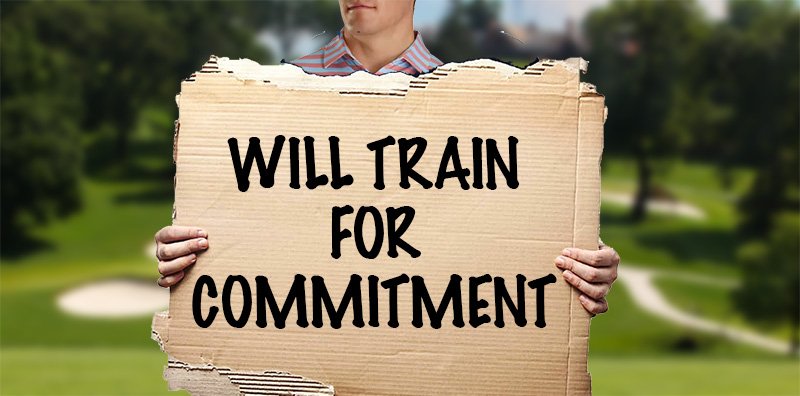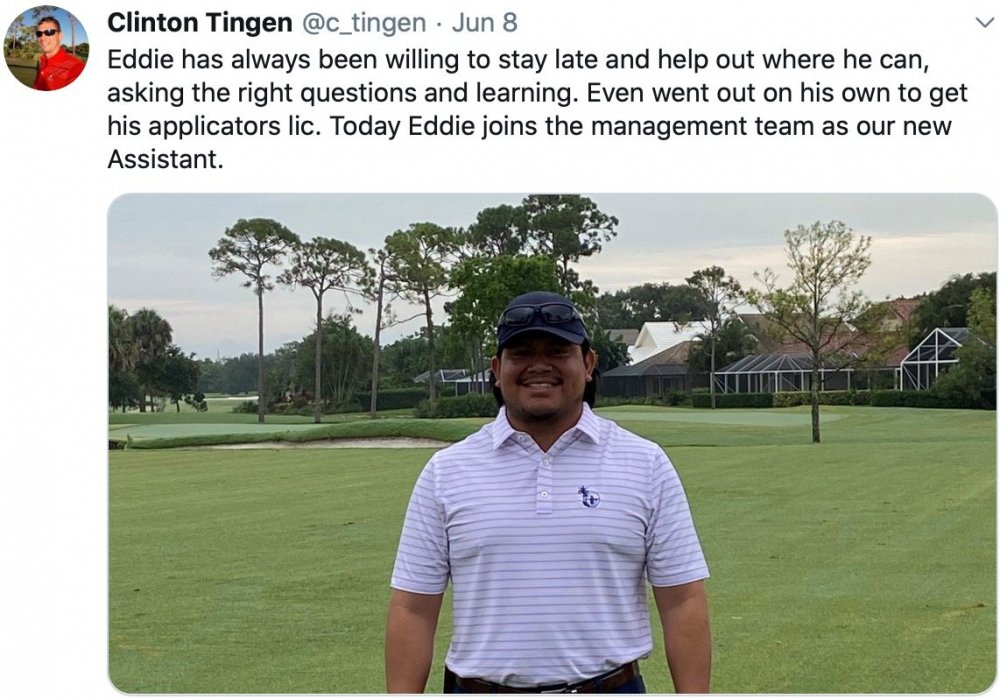Racism in Golf Turf Management
Racism in the golf turf industry? Say what? Yagottabekiddinme.
Of course I jest. There is no racism in golf turf.
That’s because, for all intents and purposes, there is only one race in golf turf management. In salaried positions (superintendents and assistants, and we might as well include suppliers, academics and the media as well), we are 99% white... and 99% male. Those figures are my guesstimates, but if these things are tracked somewhere — and what isn’t — I doubt I'd be more than a point or two off. A short spin around the trade show floor at GIS would easily confirm that, but maybe we should just say 95% to be safe. Either way, it's high. Way high.
And thank goodness for the professionalism and good humor of Willie Pennington over a very long career at BASF to Illustrate and contrast the point.
Women have received a lot of overdue press and recognition in recent years, but their numbers are still relatively small. Before we get sidetracked by that discussion, let's keep the focus on race rather than gender.
It would be difficult to conjure another industry with such lopsided demographics. Apparently veterinarians, farmers and lawyers come close. My neighbor, a white insurance executive whose wife is of mixed race, tells me the insurance industry is way up there, too.
That said, it would be equally difficult to find another industry as stand-up as this one, where community cooperation and mutual support trump competition every time and assholes are usually squeezed out before they even get a foothold.
Nonetheless, golf turf management lives in a lily-white bubble. Not by design, intent or any form of discrimination of our own doing, but by trickle-down from the history of the game at large, still perceived by many as the cliche of “played by old, rich white men in ugly pants”. On that end of the equation, the private clubs that have traditionally been the financial backbone of the industry have not always been particularly welcoming to people of color. That continues to change, of course, but is the root of the funnel of people leaning toward golf or turf as a career being overwhelmingly white.
... golf turf management lives in a lily-white bubble. Not by design, intent or any form of discrimination of our own doing, but by trickle-down from the history of the game at large...
Most of us got into this end of the business not from any great love of grass or green spaces or machines with blades and engines, but due to a love of the game. We played as kids, maybe caddied, somehow found ourselves in a summer job wiping clubs and saying Yessir, or with a weedeater in hand and discovered the game that way. Ironically, I’m the exception to all of that. I like grass and machines and the beauty of golf courses but stepped on a golf green for the first time in my late twenties. After masquerading as a golfer sporadically for about ten years midlife, I also discovered that I have no use for the game. But that’s just me.
If one doesn’t have that early exposure to golf, chances of being attracted to working in the business and following the requisite educational path are greatly reduced. This is being partially addressed by the First Tee and First Green, both of which get kids onto the golf course to at least experience it, but those inroads are small.
Beneath the salaried positions of management, staffing does become more diverse. Superintendents in many parts of the country rely on Latino/Hispanic workers as mainstays of seasonal staff and often go to great lengths to jump through hoops of bureaucratic red tape to get them. Welcomed and well taken care of (in contrast to agriculture), many are returnees, relatives and referrals eager for the job and the opportunity to work hard and send money back home.
(I've often wondered about the difference between Hispanic and Latino, so Googled it. Hispanic refers to people who speak Spanish and/or are descended from Spanish-speaking populations, while Latino refers to people who are from Latin America. So there you go.)
With labor supply one of the biggest challenges facing superintendents today, most would like to have more Latinos than they are able to find or legally hire. Yet there may be a pool of unemployed black men and women nearby that for various reasons goes untapped.
Admittedly, golf simply isn’t on their cultural radar. There may be general disdain among blacks for the thought of grooming the playgrounds of those rich, old white guys (The Man). Given similar wages, their comfort zone may be more at McDonald's than the country club. Even if hired by a golf course, they then face the prospect of being a very small minority in a mostly white setting. OK for some, I suppose, but likely not OK for more.
* * *
It would be difficult to imagine a scenario that would bump the Covid-19 pandemic off the top of the news cycle, but the recent killing of George Floyd under the knee of police in Minneapolis (and Ahmaud Arbury and Breonna Taylor, among too many others before that) did just that. The resurgent Black Lives Matter protests have been swift and spreading (not unlike the coronavirus itself, I guess), and continue today, over two weeks later. This has all happened before, of course, and one can only hope that this time will be different, that change will come and be lasting. It's time. All lives should matter. Each of us gets only one.
But I can't help but recall the momentum for gun control after the Parkland shootings, when those passionate young survivors crisscrossed the country appealing for change. Before that there was Sandy Hook, Las Vegas, Pulse/Orlando, and on and on... and nothing has changed. At least the #BlackLivesMatter movement doesn't have the NRA and the politicians in it's pocket to contend with.
As an aside, while there can be no justification for the misguided policing in Minneapolis, it has occurred to me that in recent years police across the country seem to be continually on edge and quicker with the trigger, and I blame that on the gangs and the handguns. Get rid of the guns and suddenly things would relax a bit. In my opinion, of course.
* * *

Looking at the big picture of racial inequality and discrimination, we in the golf course industry are really not part of the problem... but the associations and all of us as individuals can and should be part of the solution. As an industry, we can promote and recruit among minorities and make sure the welcome mat is out should they walk in the door. Establish training and apprenticeship programs for staff-level jobs, on the course and in the shop. Offer advancement opportunity to those who demonstrate the desire.
As individuals, we should look in the mirror and take stock with an honest assessment of ourselves regarding attitudes and behaviors toward others, including people of color. I have long lived by the notion that a problem recognized is half solved, and we can all do better, in our own albeit small ways, to not contribute to the almost daily further debasement of our societal mores and values. We need to reverse the slide, and this is as good a time and reason as any to start.
-
 5
5



9 Comments
Recommended Comments